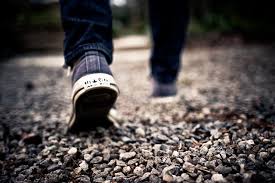Changes to our lifestyle/habits/metabolism as we age
As if it isn’t tough enough that as we get older, our metabolisms slow down (and you might have noticed the appetite takes a while to register that!), but lifestyle changes, health problems and career choices/changes will have a massive impact on activity levels. If you’re one of those lucky mortals individuals for whom eating three huge meals a day with sizeable high-energy snacks in between is a life-or-death need, you struggle to put/keep weight on, and missing a meal means you’re 3lbs lighter the next day, you’re the rarer person right now. And I’m not trivialising just how much of a struggle it can be for those of you fortunate enough to be having that problem, I do understand. Trust me, I’m a dietician. I get it.
Activity levels in the modern age
Technology is making us lazier. We spend more time:
- watching TV
- sitting at PCs
- writing emails
- doing so many more things online than we used to by traipsing round the high street
- documenting everything left, right and centre because of the litigation-crazy world we live in
- on Xboxes and Playstations
- on a mobile phone than we used to, say, 15 years ago (if you’re like me)
We’ve moved further away, in terms of physical activity, from our cave-dwelling ancestors.
My job is making me lazy
Being in the editing or writing business means lots of hours sitting down (unless you’ve been brave enough to invest in a standing desk) (eek!), not necessarily all in one long slog. No, if you’re sensible, you’ll be following all the de-stressing tips and advice out there, surrounding yourself with wonderful scents, reducing distraction with ambient noise, keeping hydrated with endless cups of weird and wonderful herbal tea (or coffee if you’re hardcore!) and making sure you take regular breaks every 20–30 minutes? Right? Wrong! Some of us might be doing that. I’m sure that most of us aren’t. I know I’m not. When I’ve got a pressing deadline, I keep slogging on, on a winning streak, thinking, ‘Yep, I’ll take a break in 10 minutes.’ Around 90 minutes later I check in, ‘Huh? Is that really the time?’ And that’s with social media notifications turned off!
What can you do to increase your activity?
It’s easy to become inactive – or even more inactive, working from the comfort of home, hours and hours at the screen. It’s not just about the inactivity, either – it’s the impact it has on your health. The NHS has suggested we undertake 150 minutes of moderate aerobic (= uses oxygen) activity a week to stay healthy. The 10,000-steps-a-day goal (that’s 10,000, not 1000!) is simple: it’s an easy number to remember; it’s walking, which is probably the simplest form of exercise; it will improve your health (cardiovascular stamina, blood lipid profile and calorie burn), your sleep and increase your metabolism. Lean tissue burns more energy than fat. Regular exercise builds lean tissue (muscle) and so more energy is burned – even at rest. Here’s the plain truth, though: 10,000 steps are not easily achieved with a sedentary lifestyle. It takes effort and discipline. Walking your child(ren) to school instead of the 5-minute drive, walking to the local shops instead of driving, and sometimes, making a conscious decision to go on a planned walk (of 40–50 minutes, ideally). The important thing is to incorporate these extra steps into your everyday routine. It’s no mean feat.
How do you measure 10,000 steps a day?
The world has gone crazy for fitness trackers, hasn’t it? Yes, they’ll monitor your steps, your sleep, breathing, pulse and God only knows what else. I’ve got an UPmove that clips onto the waistband, but a simple pedometer will do. Here’s the kind of thing my fitness tracker tells me:

Luckily, I’ve still got time today to achieve that 10,000-step goal.

OK, so 2 days ago I worked pretty well all day and did little else. I never said I was the paradigm of health and fitness, did I?
The point is, we can all be more active. Increasing our walking steps is by far one of the easiest ways to do that. It does take conscious effort (not to mention, motivation) for most of us, but in the long term, your health – something most of us take for granted when we have it – will thank you for it.


Great blog Anna. Inspired to try a gadget and get moving!
Thanks, Justine! You don’t need to spend loads for a few simple parameters to track. My device cost less than £10 on Amazon. Prices vary and most of the time it’s about being in the right place at the right time. Shop around. The most expensive isn’t always the best!
Oh Anna, like you I slog away at a computer and with the added burden of my teaching course, it is worse. I no longer train twice a week and I can see the encroaching roundness… you have inspired me to get up and get moving! x
It’s easy to become engrossed in what you’re doing, pushing any other tasks aside. And getting some fresh air and moving can be just that – a task. It’s important to move when you can and not put it off. Make time for it. Walking is one of the easiest ways! Oh, and encroaching roundness … you, Carol? As if!
I’ve ordered a fitness tracker! As in just 5 mins ago! Lol…you’ll laugh when you see how inactive I’ve become 😉
I wouldn’t laugh! Not at all! I know how easy it is to have a sedentary lifestyle. I know all about the excuses and obstacles people put up (me included) when explaining why they’re not more active. Good for you, though! Taking that positive step! Hope you didn’t pay a fortune for your device… 🤔